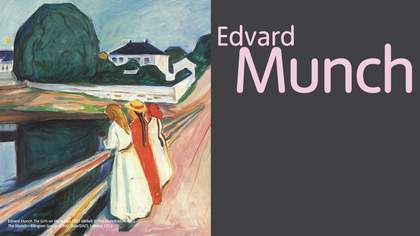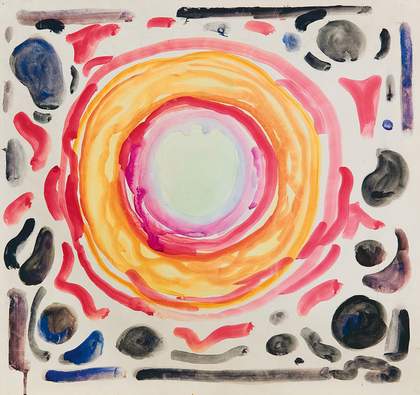As early as 1885, Edvard Munch felt the need to develop a bolder and more simplified style of painting, which we have now come to know as ‘expressionism’. He was one of those artists who reacted against naturalism, and led a movement which has since dominated modern art. It took Munch ten years to produce his own expressionist style, which was the formative influence of the German School of 1902, and which later in 1940 influenced American experimental art. Both as a painter and as a graphic artist, Munch searched to express the hitherto unplumbed depths of the human soul.
His first attempts in lithography, etching and wood cut were made in 1894, and both artistically and technically he was an important originator in these arts.
From the beginning of the 1890s, Munch waited for an opportunity to show his powers as a mural painter. Between the years 1911 and 1916 this wish was realised, when he decorated the Convocation Hall, or Aula of the University of Oslo, a work which marks the renaissance of mural painting, not only in Norway, but in all Scandinavia.
Edvard Munch’s achievement as a pioneer in modern art cannot be denied, nor his greatness an as artist. In all his work he was indifferent to ‘finish’.
What was all important to Munch was that his style of painting should enable him to expand his vision and his creative powers. In this attempt he would often produce groups of pictures, which were united by some common idea. For him art was in a certain sense an instrument of research, by which he explored the mysteries of life and of the universe. In this way he did not create an art for art’s sake, but for the sake of humanity.
In all his works he shows an intense feeling for life, which remained undiminished up to his death. This feeling so consumed Munch that his art became marked by extreme violence. His hand worked as if continuously improvising, direct from nature, almost without effort, so that his art, both in its form and meaning, can be enjoyed and understood throughout the world. A vivid sympathy with human sorrow and suffering, which he had witnessed so closely, fostered in the youthful Munch a restless introspection, a deep and painful pessimism. This created a sense of dread, which became practically a disease at that period of his life. In time, however, he became, through contemplation of the mighty and enduring forces of nature, less introspective. This led to a more mature view of human existence, which expressed itself in a new and confident faith in life.
Johan H. Langaard




